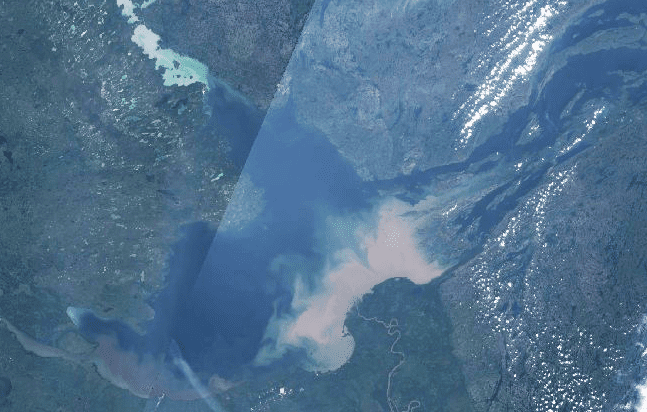Silt clouds have reportedly been seen in the South of Great Slave Lake.
The Government of the Northwest Territories looking into what is causing the silt and what are its implications for Northerners who rely on the Slave for water.

One theory is related to the W.A.C Bennett dam release on July 12.
The Bennett Dam on the Peace River in Northern British Columbia is upstream from the Slave and, according to ENR spokesperson Josyln Oosenbrug, “can impact flow on the Peace and Slave Rivers and water levels (in) Great Slave Lake.”
According to the Alaska Highway News, a high volume of water in the dam's reservoir caused by a significant melt of snow from the winter and heavy rainfall more recently prompted officials to "spill" it off overnight July 12 to 13.
According to that report, the spill lasted just more than 12 hours, starting at 7:25 p.m. and ending at 8 a.m. Roughly 570 cubic metres per second of water was released, and the spill was limited to WAC Bennett Dam. BC Hydro has indicated that the water spilled was small enough that the Peace Canyon Dam, 23 kilometres downstream, could handle the increased water volume without releasing additional water downstream.
Oosenbrug likewise said the silt plume and the dam release are unrelated.
“Controlled releases are considered a normal part of operations and BC Hydro's dams are designed for the safe and controlled release of water. Given the size of the Peace, Athabasca and Slave Rivers, it is unlikely that a small release, even if conducted over several days or weeks, would be detectable on waterways in the Northwest Territories.”
The steep conditions and abundant water supplies of mountainous areas, like the Peace and upper Mackenzie rivers, enable large amounts of sediment to be carried away, according to Environment and Climate Change Canada. Silt, along with other soil sediments, can make water treatment processes more expensive and have the potential to impact aquatic populations.
Possible links between the silt plumes and higher than average water levels in Great Slave Lake are being investigated, according to Oosenbrug.
